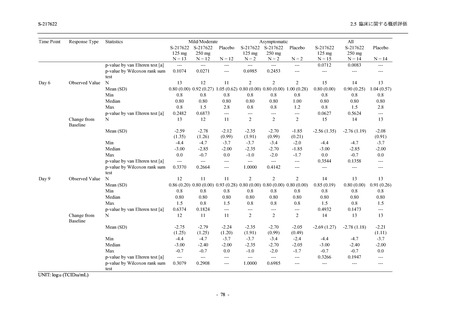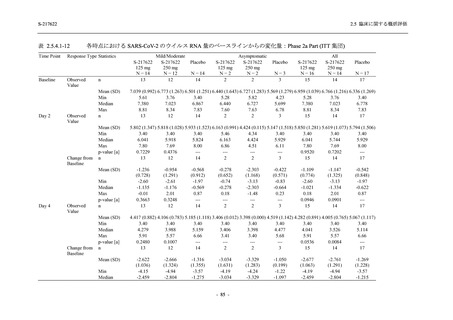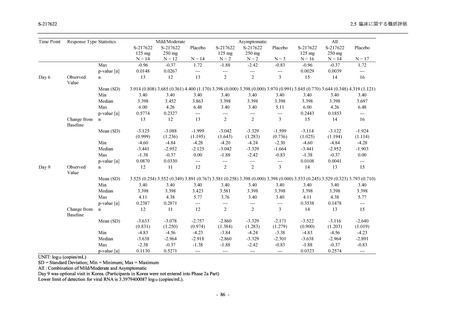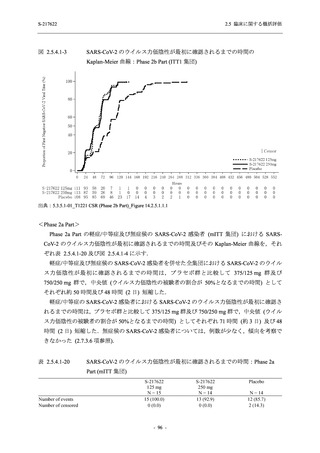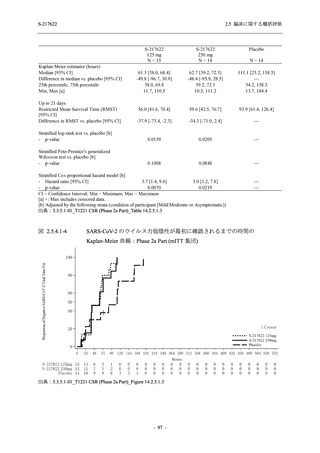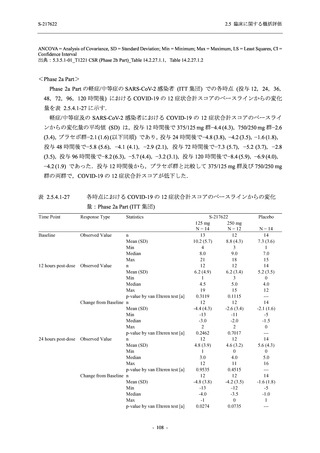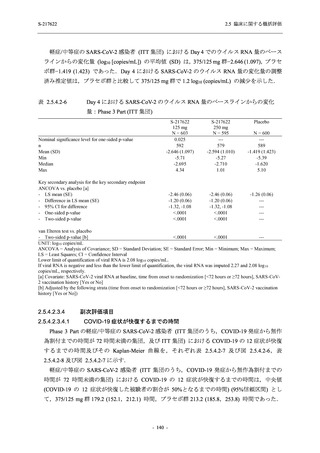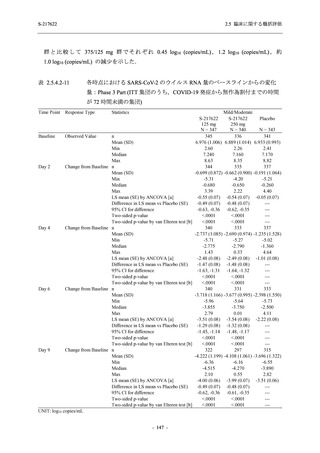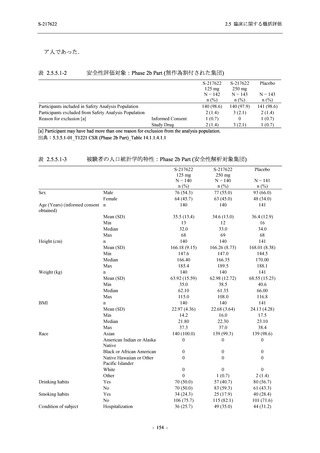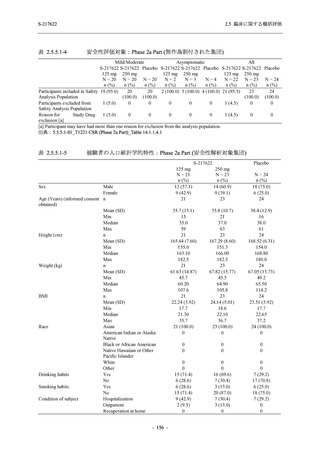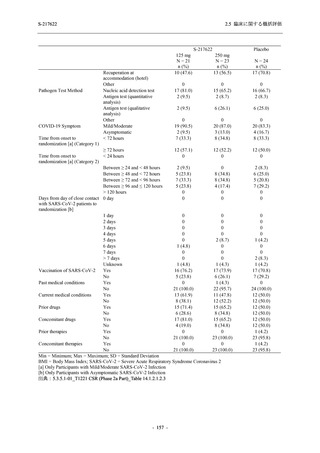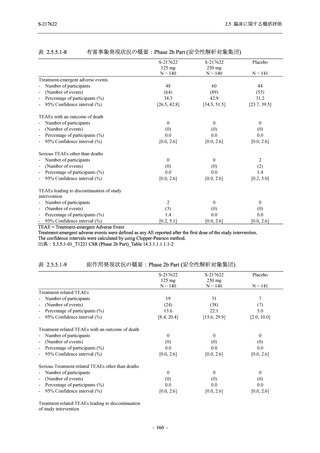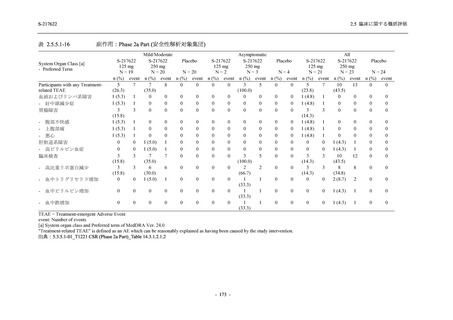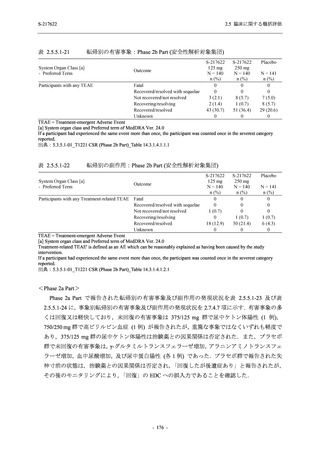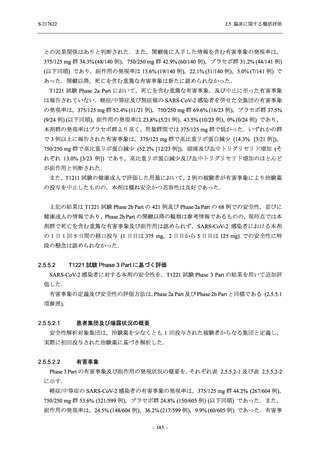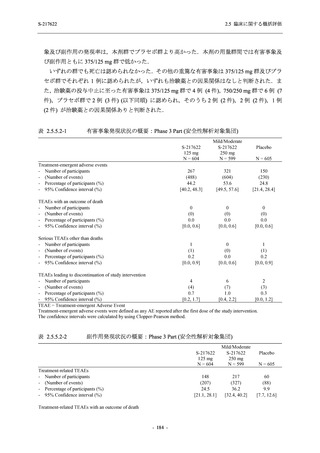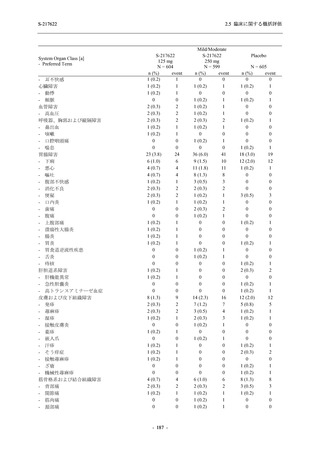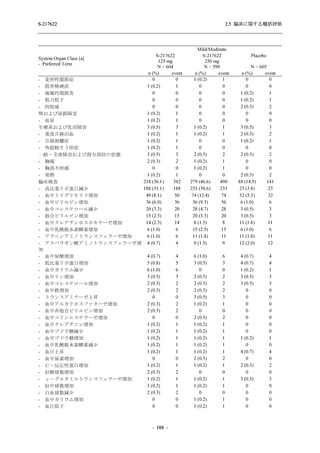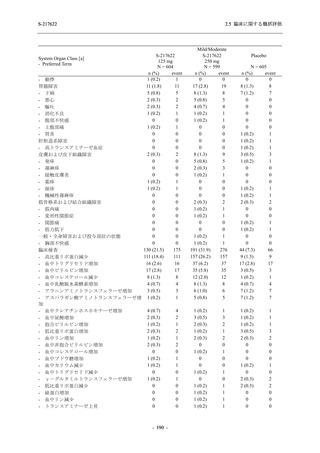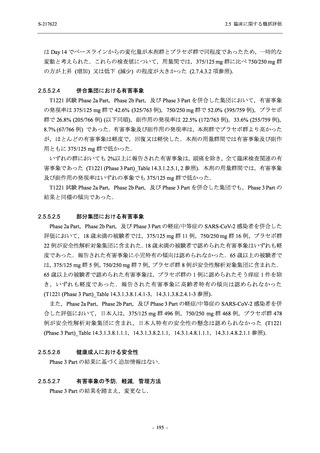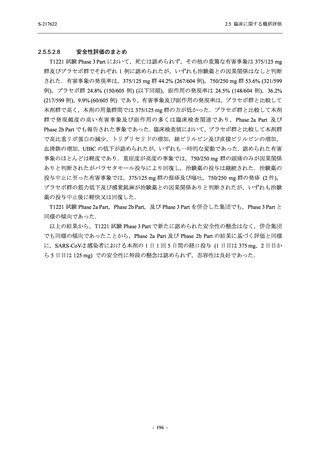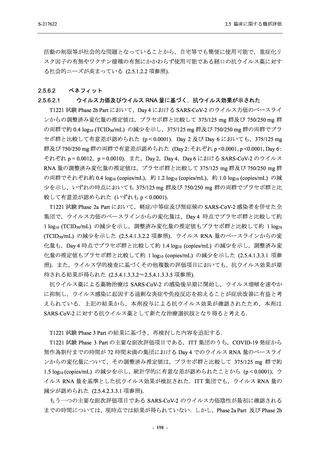【資料No.1】2.5_臨床に関する概括資料 (193 ページ)
出典
| 公開元URL | https://www.mhlw.go.jp/stf/newpage_29325.html |
| 出典情報 | 薬事・食品衛生審議会 薬事分科会(令和4年度第5回 11/22)、医薬品第二部会(令和4年度第13回 11/22)(合同開催)《厚生労働省》 |
ページ画像
プレーンテキスト
資料テキストはコンピュータによる自動処理で生成されており、完全に資料と一致しない場合があります。
テキストをコピーしてご利用いただく際は資料と付け合わせてご確認ください。
2.5 臨床に関する概括評価
表 2.5.5.2-8
転帰別の副作用:Phase 3 Part (安全性解析対象集団)
System Organ Class [a]
- Preferred Term
Outcome
Participants with any Treatment-related TEAE
Fatal
Recovered/resolved with sequelae
Not recovered/not resolved
Recovering/resolving
Recovered/resolved
Unknown
Mild/Moderate
S-217622 S-217622 Placebo
125 mg
250 mg
N = 604 N = 599 N = 605
n (%)
n (%)
n (%)
0
0
0
0
0
0
5 (0.8)
8 (1.3)
8 (1.3)
8 (1.3)
9 (1.5)
9 (1.5)
135 (22.4) 200 (33.4) 42 (6.9)
0
0
1 (0.2)
TEAE = Treatment-emergent Adverse Event
[a] System organ class and Preferred term of MedDRA Ver. 24.0
"Treatment-related TEAE" is defined as an AE which can be reasonably explained as having been caused by the study
intervention.
If a participant had experienced the same event more than once, the participant was counted once in the worst outcome
category reported.
2.5.5.2.2.1.4
発現時期別
Phase 3 Part で報告された発現時期別の有害事象及び副作用の発現状況を表 2.5.5.2-9 及び表
2.5.5.2-10 に,事象別発現時期別の有害事象及び副作用の発現状況を 2.7.4.7 項に示す.プラセボ
群と比較して,本剤群で Day 6~7 に認められた有害事象が多かったが,臨床検査値の測定が
Day 1 (投与前),6,14,28 であり,投与後に発現した臨床検査関連の有害事象の多くが Day 6
(許容幅:+1) に報告されたことによるものであり,臨床検査関連の有害事象を除くと,本剤群
とプラセボ群で同様の傾向であった.
表 2.5.5.2-9
発現時期別の有害事象:Phase 3 Part (安全性解析対象集団)
System Organ Class [a]
- Preferred Term
Participants with any TEAE
Period of Onset
Day 1
Day 2-5
Day 6-7
Day 8-14
Day 15-28
> Day 28
S-217622
125 mg
N = 604
n (%)
26 (4.3)
37 (6.1)
215 (35.6)
24 (4.0)
33 (5.5)
4 (0.7)
Mild/Moderate
S-217622
250 mg
N = 599
n (%)
21 (3.5)
46 (7.7)
270 (45.1)
27 (4.5)
28 (4.7)
2 (0.3)
Placebo
N = 605
n (%)
14 (2.3)
32 (5.3)
66 (10.9)
32 (5.3)
26 (4.3)
5 (0.8)
TEAE = Treatment-emergent Adverse Event
[a] System organ class and Preferred term of MedDRA Ver. 24.0
If a participant had experienced the same event more than once, the participant was counted once in each of the relevant
period reported.
- 193 -













































































